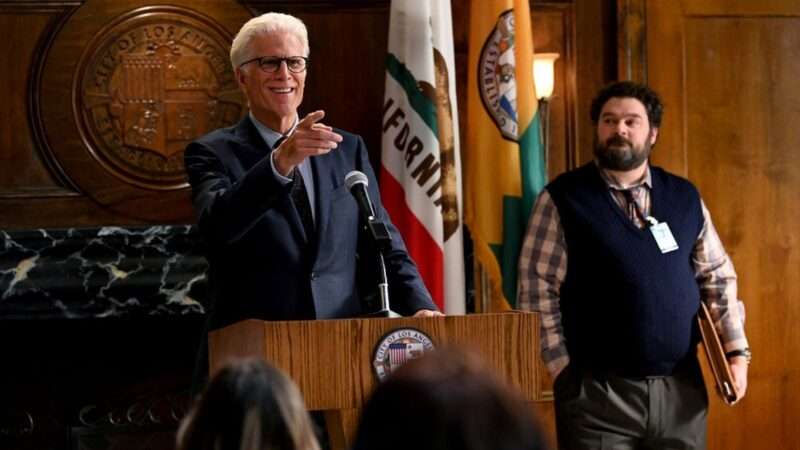
Ahead of today’s pair of crucial Senate runoff elections in Georgia, President Donald Trump ostensibly campaigned for the two Republican candidates, but instead used his time to air more grievances about the last election. Trump is convinced that he won Georgia in November’s presidential election, even though the official numbers say he lost by nearly 12,000 votes and despite the fact that Trump’s lawyers have been unable to find evidence of widespread voter fraud in the state. A day after The Washington Post published an audio recording of a phone call where Trump cajoled the state’s Republican secretary of state to “find” enough votes to flip the results, the president continued to push his discredited conspiracy theories at a Monday rally to reelect incumbent Sens. David Perdue and Kelly Loeffler, the two GOP candidates who are on the ballot Tuesday.
“That was a rigged election. But we are still fighting it,” Trump told a crowd in Dalton, Georgia. He promised to return to the state next year to campaign against Georgia Gov. Brian Kemp, another Republican whom Trump blames for his loss in November.
Trump’s refusal to accept the results of the presidential election has left Republicans in a bind. If Democrats win the two runoff elections on Tuesday, they will have a slim Senate majority (with incoming Vice President Kamala Harris as the tiebreaking vote). The latest polls show Democratic candidates Jon Ossoff, a former journalist and political activist, and Raphael Warnock, a pastor, with slim leads in their respective races. That means turnout will likely decide the outcome, and if Trump has proven anything since his entry into politics in 2015, it’s that he’s a turnout machine for the Republican base.
But the president’s behavior—and the fact that both Perdue and Loeffler have refused to reject a wild plot by some Republican senators to challenge the certification of the presidential election’s results—may have alienated enough mainstream Republicans to tip Tuesday’s races toward the Democrats. Alternatively, Trump’s repeated (and false) attacks on the legitimacy of elections in Georgia may encourage his supporters to stay home.
That inconsistency has been on full display in the president’s Twitter feed where he has alternated between condemning Georgia’s election process as fraudulent—even going so far as to say that Tuesday’s runoff elections are “illegal and invalid“—and encouraging his supporters to participate in them. It leaves the impression, once again, that Trump sees elections as legitimate only when the results favor him.
Regardless of what happens on Tuesday night, we can all breathe a welcome sigh of relief that the seemingly interminable 2020 election season is finally over. It began with a Democratic primary debate on June 26, 2019. At 7 p.m. today, 559 days later, the polls will close and it will finally come to an end.
FREE MINDS
Maximizing COVID-19 vaccinations means sometimes ignoring the government’s guidelines for who gets vaccinated first, especially when the alternative is throwing vaccine doses in the trash. More of the D.C. approach, please. And less of New York Gov. Andrew Cuomo’s heavy-handed approach to vaccine distribution, which is likely to be a disaster.
In D.C., the Department of Health is reportedly encouraging health care providers to administer surplus vaccines nearing expiration to *any willing recipient.* As they should.
In New York, that would cost you your job, and a lot of money.https://t.co/QGtPTjoTOk
— Billy Binion (@billybinion) January 5, 2021
FREE MARKETS
Americans moved from big metropolises to smaller cities and away from high-cost, high-tax states during 2020, according to annual migration data tracked by United Van Lines, a major moving company. Idaho was the state with the highest percentage (70 percent) of inbound moves last year, followed by South Carolina and Oregon—while New Jersey (70 percent) had the highest percentage of outbound moves, just narrowly ahead of New York, Illinois, Connecticut, and California.
Metros w/ Highest Moves OUT, 2020
on @unitedvanlines1/ Nassau, NY (81%)
2/ Bergen, NJ (81%)
3/ Trenton, NJ (76%)
4/ New York, NY (72%)
5/ Newark, NJ (72%)
6/ Chicago, IL (69%)
7/ Bremerton, WA (69%)
8/ Bridgeport, CT (69%)
9/ Middlesex, NJ (69%)
10/ Lake, IL (68%)— Michael Hendrix (@michael_hendrix) January 4, 2021
QUICK HITS
- The results of Tuesday’s runoff elections in Georgia will determine how ambitious President-elect Joe Biden’s first-term agenda will be.
- “A virus spent some time in a laboratory, and eventually it got out,” writes Nicholson Baker in a chilling long-form piece for New York magazine that lays out one potential origin story for COVID-19.
- In Singapore, COVID-19 tracing information is being made available to the police.
- The United Kingdom is going back into a full lockdown as coronavirus cases surge.
- Fun fact for a day when all eyes are on the state: In Athens, Georgia, there is a tree that owns itself.
from Latest – Reason.com https://ift.tt/3hNAoUK
via IFTTT
